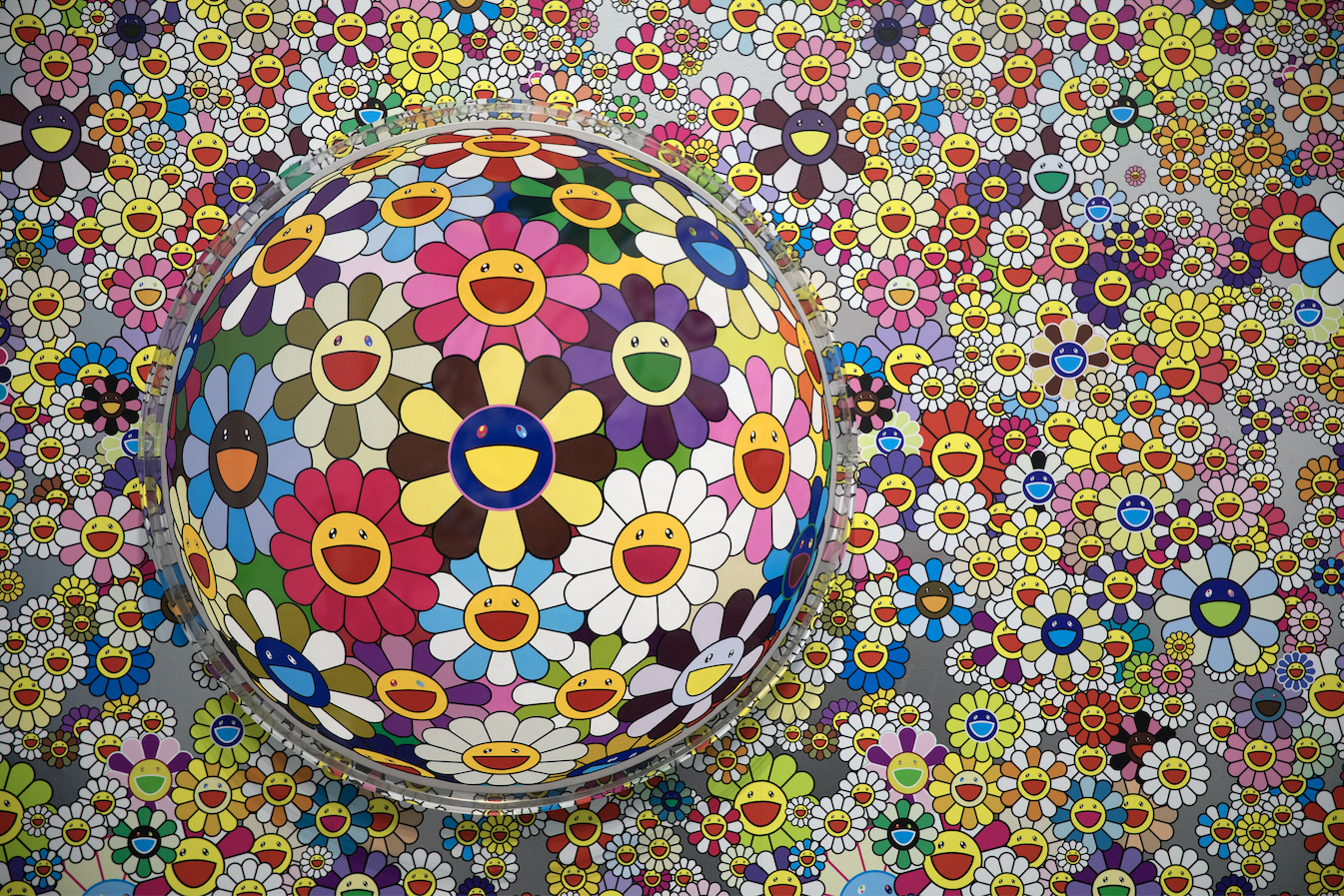The best part about online dating: Meeting my fiance, a carpenter and bookworm who looks like the corruptible cop in a ‘70s porno.
The second-best part: The unabashed documentation of contemporary art that takes place on dating apps.
While I haven’t online dated in almost a year, one of the things I remember most about the swipe-right game is the Murakami selfie. Back in 2017, the MCA mounted an enormous exhibition of Takashi Murakami’s work, “The Octopus Eats Its Own Leg.” A bondafide blockbuster, the show set record attendance numbers for the museum.
While the Kanye-factor was there — Murakmi famously provided album artwork for the rapper's third album, Graduation — I’d also wager this audience boom had to do with the show’s bursting neo-pop aesthetics, ripe and ready for Instagram. I came out thinking, “Oh, this is the impact of social media on museums. I get it now.”
There was one installation in particular — an arched wall covered floor-to-ceiling in a wild Murakami print — that begged for a selfie. The art critic in me saw a brilliant move on by the curators and artist, leaning into the digital proclivities of modern museumgoers. Meanwhile, the freshly divorced sad grrrl in me saw an opportunity. I used that damn good lighting and damn good art to take a damn good selfie.
On Tinder and OKCupid, I saw that others had done the same. I also found selfies from EXPO, hurried shots taken at the Art Institute, and photos from a slew of the other art galleries I frequented on Friday nights. Some had the art world dour that intimidates the heck out of me (swipe left). Others gestured to the artwork as if they were wildly out of place in an art institution (relatable, but swipe left). A few hit that sweet-spot, with candid pictures of themselves actually having fun at galleries, Costco wine and cheese in hand (swipe right).
But it was the presence of artworks in these pictures that interested me most. They seemed to act as a litmus test, depicting our most pervasive attitudes toward contemporary art.
In the case of online dating, where you’re selling yourself in a few sentences and photos, visual art exists as a prop, a signpost for aspirations or values. A potential suitor might not understand the artwork itself, but they understand art’s meaning in the broader sense of things — it’s ability to elevate a person culturally. In this context, and on these apps, art is a tool for acquiring love, sex, maybe even both.
I’m not alone in seeing this. Mev Luna, an interdisciplinary artist and BOLT resident, treats Tinder “like a video game” and immediately blows by these types of photos.
“It’s a way of saying, ‘Hey, I’m engaged,’ but to me, it feels really out of touch,” they said. “It’s clear the person is trying to say, ‘I do this cool thing,’ but it comes across as the opposite because it’s so ubiquitous.”
Luna points to the artist Andrea Fraser’s 2006 essay, “A museum is not a business but it is run in a businesslike fashion.” In it, Fraser critiques the proliferation of “income-producing activities” at various major art institutions, as well as non-art programming and “marketing strategies that turn the museums’ educational mission on its head, tailoring exhibitions to existing audiences, rather than producing new ones.
“Art for the sake of art has been discredited, but its replacement seems to be art for the sake of growth,” she continues.
More recently, Sophie Haigney noted the same development, writing in The New Yorker:
But tech or no tech, visual art in 2018 is increasingly a set piece of sorts, an aesthetic signifier that can mean ‘taste,’ or ‘contemplation,’ or ‘having a good time,’ depending on the artwork in question. Rothko paintings are particularly good for this, judging by their popularity online; they flatten easily into bright swaths of color, while maintaining a certain cultural cachet.
In dating apps, too, it's usually a very specific type of art showing up. “It's not like someone is standing next to a Bruce Nauman and highlighting sexual abuse,” Luna says. “It’s art that presents spectacle, like other Instagram-traps. There are now all these places that create an experience that can be turned into an image.”
Luna compares the people whose dating profiles are littered with art to foodies. To them, the image works a cue, signaling a person's aspirations in the world.
“These images repel me, though, because those are not the kind of art-dates I want to go on,” Luna says. “Yes, these [pieces] are contemporary art. But once they become these reproduced images, they become indicators of how museums are functioning now. They’re businesses, and their business is an ‘experience.’ "
Of course, it’s radically different when someone posts their own work — but those images are few and far between, and depend upon how intimate a person wants to get on their profile.
“You’re going to get less of that on Tinder," Luna says. "The more casual the app, the less work people are going to do. People on OKCupid are going to put the work in.”
For the record, I met my fiance on OKCupid. We went to the MCA on our first date.




Comments are closed.